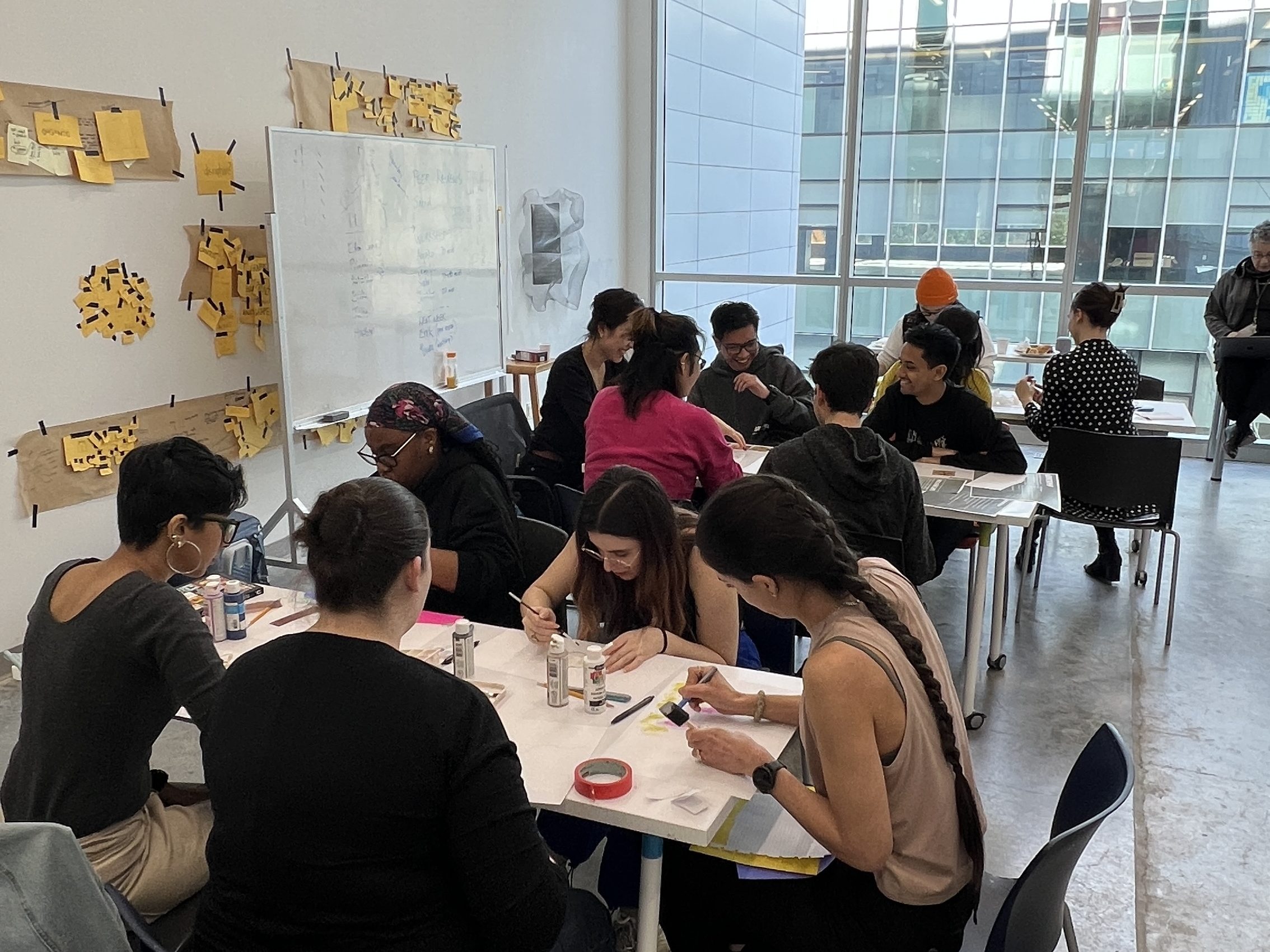
When considering the “moment to moment” nature of Collaboration that I hope to dissect, I find it can be best described as the “serendipity” of Collaboration. The space where everything and everyone are in sync leading you to the “Light-bulb” moment. The “flow-state” of creativity, when ideas appear, and it all makes sense. These cards came from this thinking, from the aim to design for this synchronicity. The cards are a representation of my approach to feedback, critique, ideation and approaching iterations of a work. I also continue to explore a form of shared or fluid hierarchy by implementing a structure similar to that of an exquisite corpse.
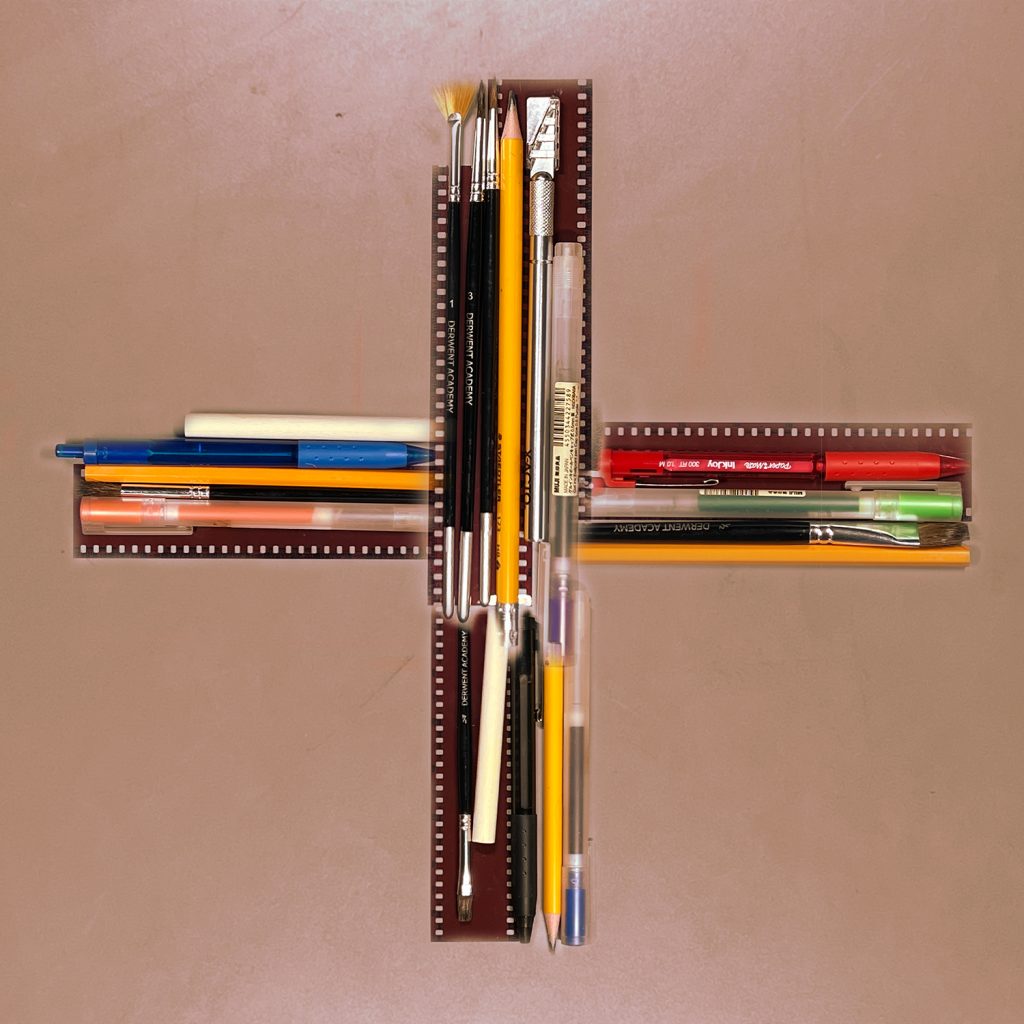
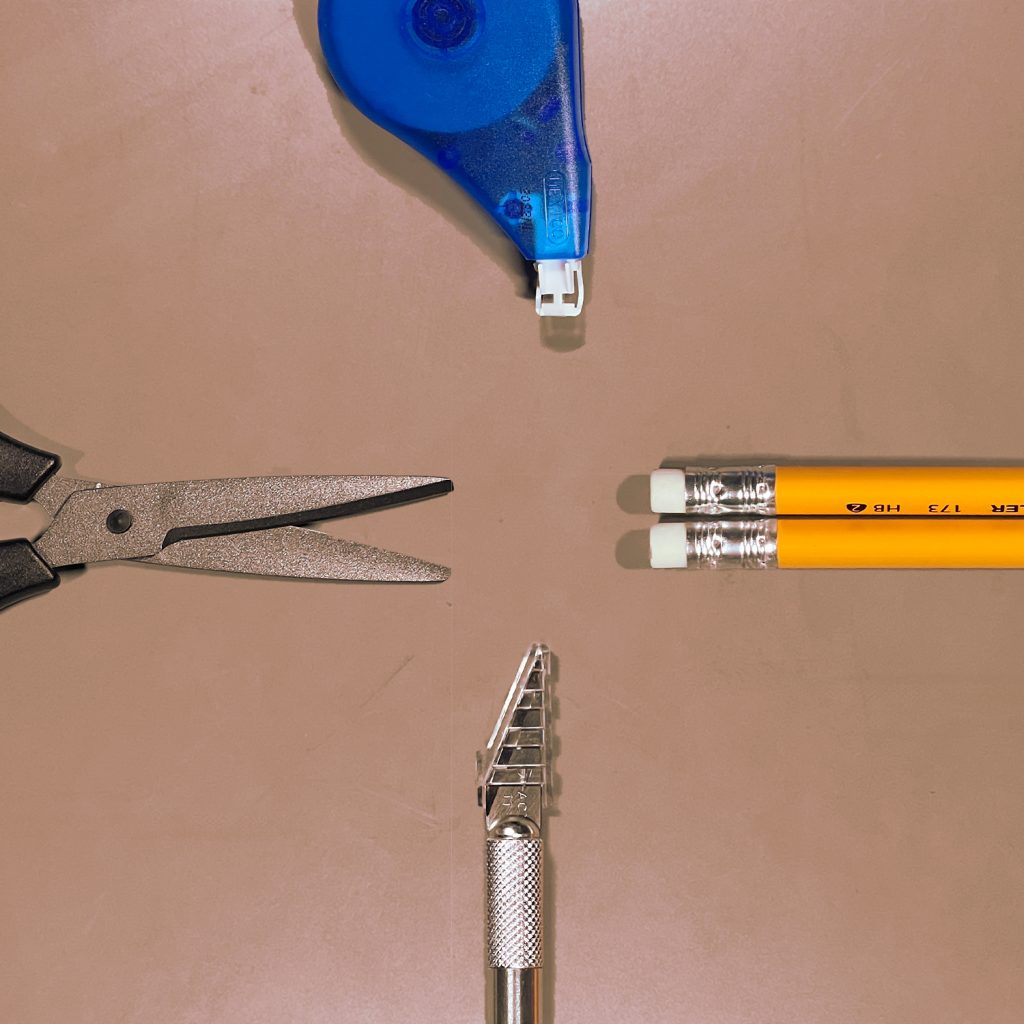
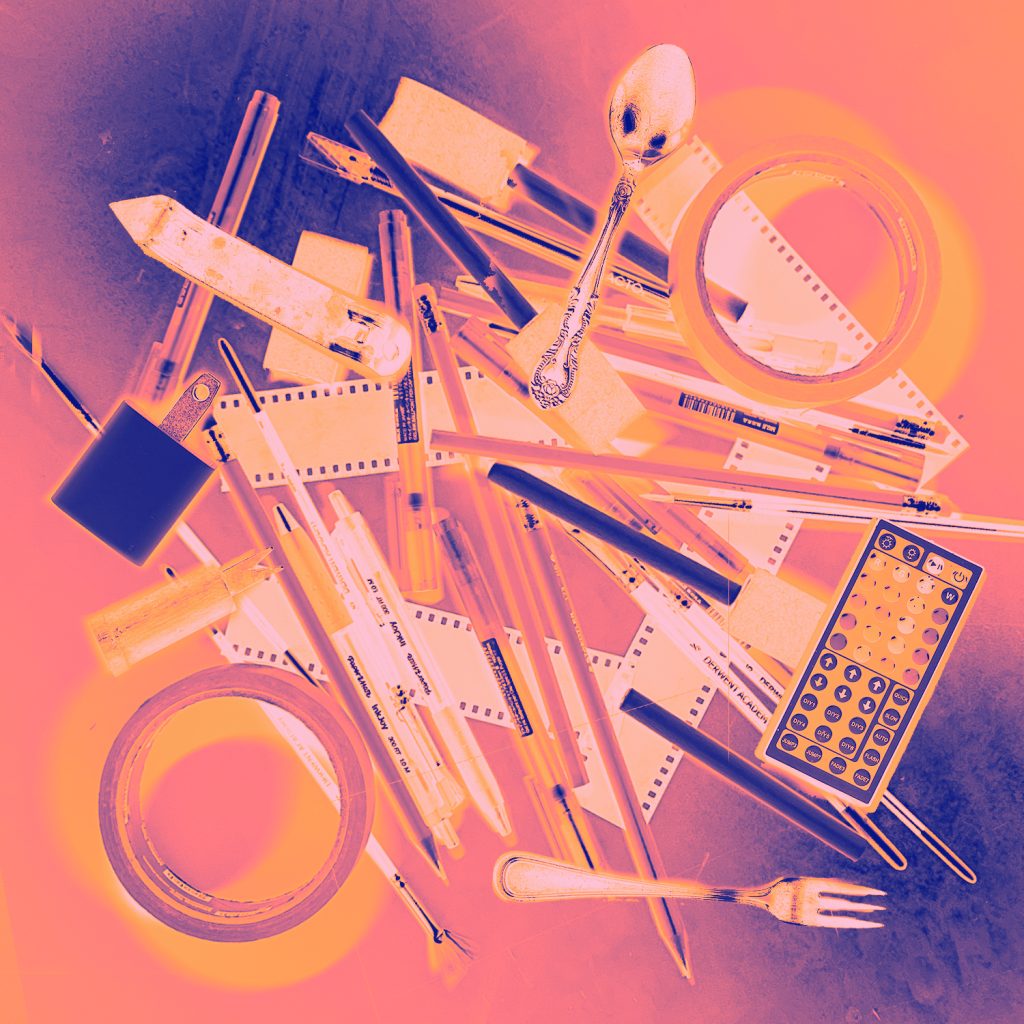

I designed a set of four “action” cards. Similar to how a Role-Playing game is structured, players / collaborators will have the opportunity to engage with the work using these action cards. They were designed based on how I approach my process: additive actions, subtractive actions, alterations or applying inspiration. The design of the cards were simple. Using the materials that I would provide at the workshop, I created forms and used the action of the card to help inform the design. The addition is rather obvious (a “+” symbol) as well as the subtraction (tools to cut, remove or cover up). The alteration card would represent the same items in a rather strange manner, with a bright gradient overlay, and the inspiration card was a visualization of stumbling upon something exciting – a small treasure in the box amongst the same tools. My classmates were also given some examples, a list of choices, for each category of action.
Three groups took part in this workshop, and they were tasked with creating a “dreamscape” using the exquisite corpse method. The alteration to this process was that, in a traditional exquisite corpse, participants would cover up the previous work done to the whole. In our workshop, we did not have this stipulation. Two of the groups were given the cards, one group was forced to work solely using the action cards whereas it was optional for the second group. The final group was not given the action cards, and they tackled their dreamscapes in a more messy, intuitive way. The workshop was chaotic, but my classmates all seemed to enjoy the process and their work was just as interesting.


Group One, without any of the cards, found a certain intuition around the making – immediately grabbing materials and deciding to create multiple pieces to stitch together later. They mentioned both a desire to share and add to one another’s work, switching when “they felt it was right” and consistently holding onto notions of play. The ambiguous aim allowed for a “letting go of control”, and they found they felt less precious about their work as it went along.
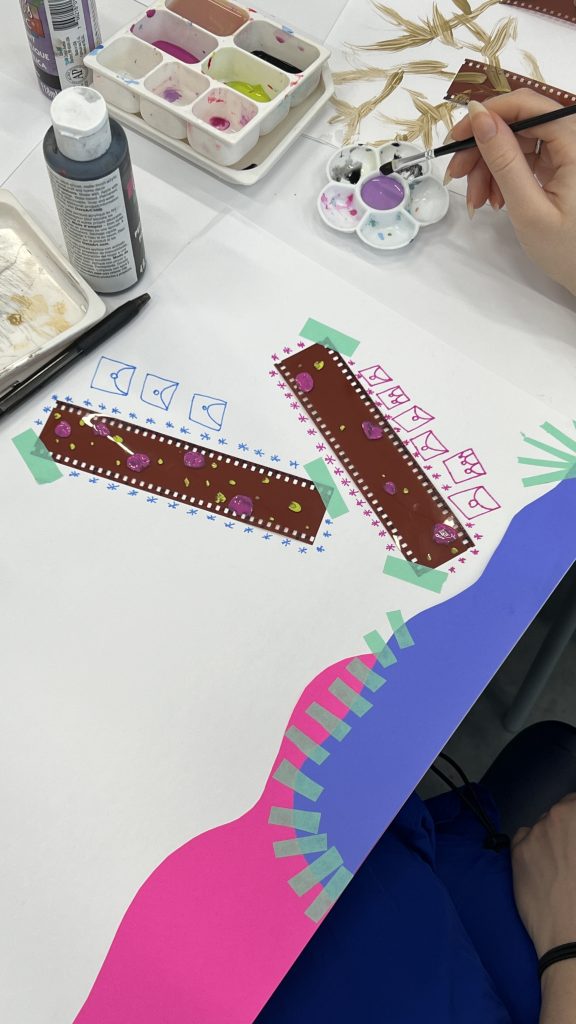
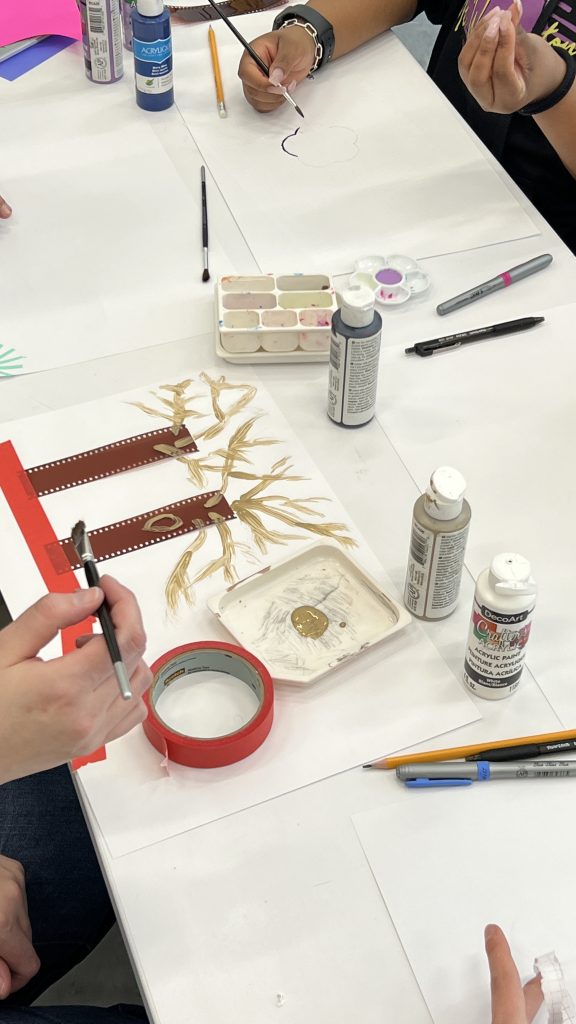
The other two groups were consistently using the cards, but in varying ways. The required group found that they were not using the inspiration card as much, as the process itself continuously inspired them – especially seeing other’s in the group add to the work in their own ways. A member of Group Three, the required-use group, added a new material, while also adding another dimension, thus inspiring the rest of the group to do the same. Group Two, the group that had the ability to choose whether or not they could use the cards, seamlessly moved through the process as well, notably with one member of the group continuously bringing inspiration to the process. Group Two focused more on process as opposed to their final product, folding and layering their piece to not only build but shift the context of the process. They referred to it as performance art. Something about this was interesting, how they weren’t necessarily focused on collaborating to develop a final piece, but to work and iterate in response to one another.


There were a lot of questions and considerations after the process. How would this change under deadlines and client expectations? Are the cards too specific in the options of actions they provide? Do the cards need to be tailored to specific contexts they are being used in? Are these cards really supporting flow? If flow is defined by making and thinking, are these cards supporting that? What is the real goal of the cards?
I continue to marinate with the idea that the cards were too specific, that the actions provided were not necessarily to keep flow but to push the process “forward”, which may not be one in the the same. How are we defining this “flow”? After taking some time to reflect on the cards, and with the considerations that my classmates provided, I am taking a step back throughout reading break to reflect on this idea of flow, of synchronicity, and how we may design for it. Leading into my Monthly reflection for February, I am thinking about how we can master this flow state? And of course, how may we design for a collective flow state?
I do hope to revisit these cards after revisiting the prompts under each action and restructure them. The intention is to get the mind jogging, to allow thinking to fester with these cards as something to stoke that thinking with. Whether to get your mind clear or to spark it with something specific, I would like to develop these cards to the point where I had originally envisioned: to a point where they truly to help keep “flow” moving.